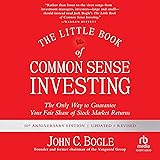Table of Contents
Welcome to the wonderful world of sector investing! Today, we are going to delve into the concept of sector investing and how you can capitalize on sector trends for optimal investment returns. So, grab your favorite beverage, get cozy, and let's dive into this exciting topic together.
The Basics of Sector Investing
First things first, let's break down what sector investing actually means. In the world of finance, a sector refers to a group of companies that operate in the same industry. For example, the technology sector includes companies like Apple, Microsoft, and Google, while the healthcare sector includes companies like Johnson & Johnson and Pfizer.
- Sector Investing Definition: Sector investing involves focusing your investment strategy on specific sectors of the economy rather than individual companies or the market as a whole.
- Benefits of Sector Investing: By investing in sectors that are expected to outperform the broader market, you can potentially achieve higher returns on your investments.
- Risks of Sector Investing: On the flip side, sector investing can also be riskier than investing in a diversified portfolio, as sector performance can be more volatile and unpredictable.
Now that we have a basic understanding of sector investing, let's explore how you can use sector trends to your advantage when making investment decisions.
Capitalizing on Sector Trends
One of the key principles of sector investing is to identify and capitalize on sector trends. By analyzing trends in different sectors of the economy, you can position your investments to benefit from growth opportunities and avoid sectors that may be facing challenges.
- Identifying Sector Trends: Keep an eye on economic indicators, industry reports, and news headlines to identify emerging trends in different sectors. For example, the rise of e-commerce has been a major trend in the retail sector, while advancements in renewable energy have driven growth in the clean energy sector.
- Investing in Growing Sectors: Once you have identified sectors that are poised for growth, consider allocating a portion of your investment portfolio to these sectors. For example, if you believe that the healthcare sector will continue to expand due to an aging population, you may choose to invest in healthcare companies.
- Diversifying Across Sectors: While it's important to capitalize on sector trends, it's also crucial to diversify your investments across different sectors to reduce risk. By spreading your investments across multiple sectors, you can mitigate the impact of a downturn in any one sector.
Now, let's look at some real-world examples to illustrate how sector investing can lead to optimal investment returns.
During the dot-com bubble of the late 1990s, the technology sector experienced a massive boom as investors poured money into internet-related companies. However, when the bubble burst in the early 2000s, many technology stocks plummeted, leading to significant losses for investors who had heavily concentrated their investments in this sector.
On the other hand, during the financial crisis of 2008, the healthcare sector proved to be relatively resilient compared to other sectors. Healthcare companies continued to generate revenue and profits even during the economic downturn, making them a safe haven for investors seeking stability in turbulent times.
These historical events highlight the importance of understanding sector trends and diversifying your investments to achieve optimal returns.
Now, let's take a closer look at some statistics to further emphasize the impact of sector investing on investment returns.
- According to a study by Fidelity Investments, over the past 20 years, the technology sector has been the best-performing sector in the S&P 500 index, with an average annual return of 13.6%.
- In comparison, the energy sector has been the worst-performing sector over the same period, with an average annual return of -0.6%.
- By strategically allocating your investments to outperforming sectors like technology and avoiding underperforming sectors like energy, you can potentially achieve higher investment returns over the long term.
As we wrap up our discussion on sector investing, I want to leave you with some practical exercises to empower you to apply these concepts to your own investment strategy.
Practical Exercises:
- Conduct Research: Take some time to research different sectors of the economy and identify trends that may impact their performance. Look for opportunities for growth and potential risks that may affect sector returns.
- Review Your Portfolio: Evaluate your current investment portfolio and assess how diversified it is across different sectors. Consider rebalancing your portfolio to capitalize on sectors that are expected to outperform in the future.
- Seek Professional Advice: If you're unsure about how to incorporate sector investing into your investment strategy, consider seeking advice from a financial advisor who can provide guidance based on your financial goals and risk tolerance.
By taking these steps and staying informed about sector trends, you can position yourself for optimal investment returns and navigate the ever-changing landscape of the financial markets with confidence.
Remember, sector investing is not about timing the market or chasing hot trends; it's about understanding the underlying dynamics of different sectors and making informed decisions based on your investment goals and risk tolerance.
So, go forth and conquer the world of sector investing with knowledge and wisdom. May your investments flourish and your returns be bountiful!
I'll end by saying this: I'm doing my best to explain and simplify these concepts. But know that these short articles are just the beginning, and I want you to keep reading, learning and experimenting. To help you, here are a few books on investing, to prepare you for a deeper dive into the world of wealth creation:












